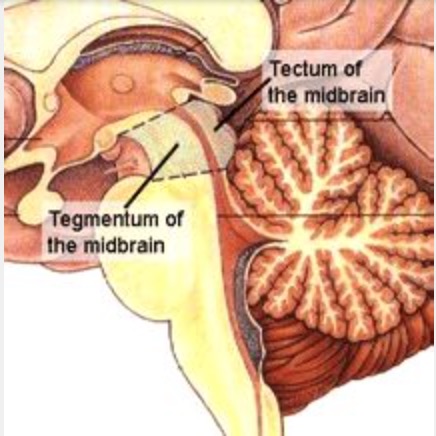Tectum
The tectum is a layered structure, with a number of layers that vary by species. The superficial layers are sensory-related, and receive input from the eyes as well as other sensory systems.
The deep layers are motor-related, capable of activating eye movements as well as other responses. There are also intermediate layers, with multi-sensory cells and motor properties.
The tectum (Latin: roof) is a region, specifically the dorsal part of the mesencephalon.
This is contrasted with the tegmentum, which refers to the region ventral to the ventricular system. The tectum is responsible for auditory and visual reflexes.
It is derived in embryonic development from the alar plate of the neural tube.
In adult humans, it only consists of the inferior and the superior colliculus.
The superior colliculus is involved in preliminary visual processing and control of eye movements. In non-mammalian vertebrates it serves as the main visual area of the brain, functionally analogous to the visual areas of the cerebral cortex in mammals. The inferior colliculus is involved in auditory processing. It receives input from various brain stem nuclei and projects to the medial geniculate nucleus of the thalamus, which relays auditory information to the primary auditory cortex. Both colliculi also have descending projections to the paramedian pontine reticular formation and spinal cord, and thus can be involved in responses to stimuli faster than cortical processing would allow. Collectively the colliculi are referred to as the corpora quadrigemina.
The term “tectal plate” (or “quadrigeminal plate”) is used to describe the junction of the gray and white matter in the embryo. (ancil-453 at NeuroNames)
see tectal glioma
